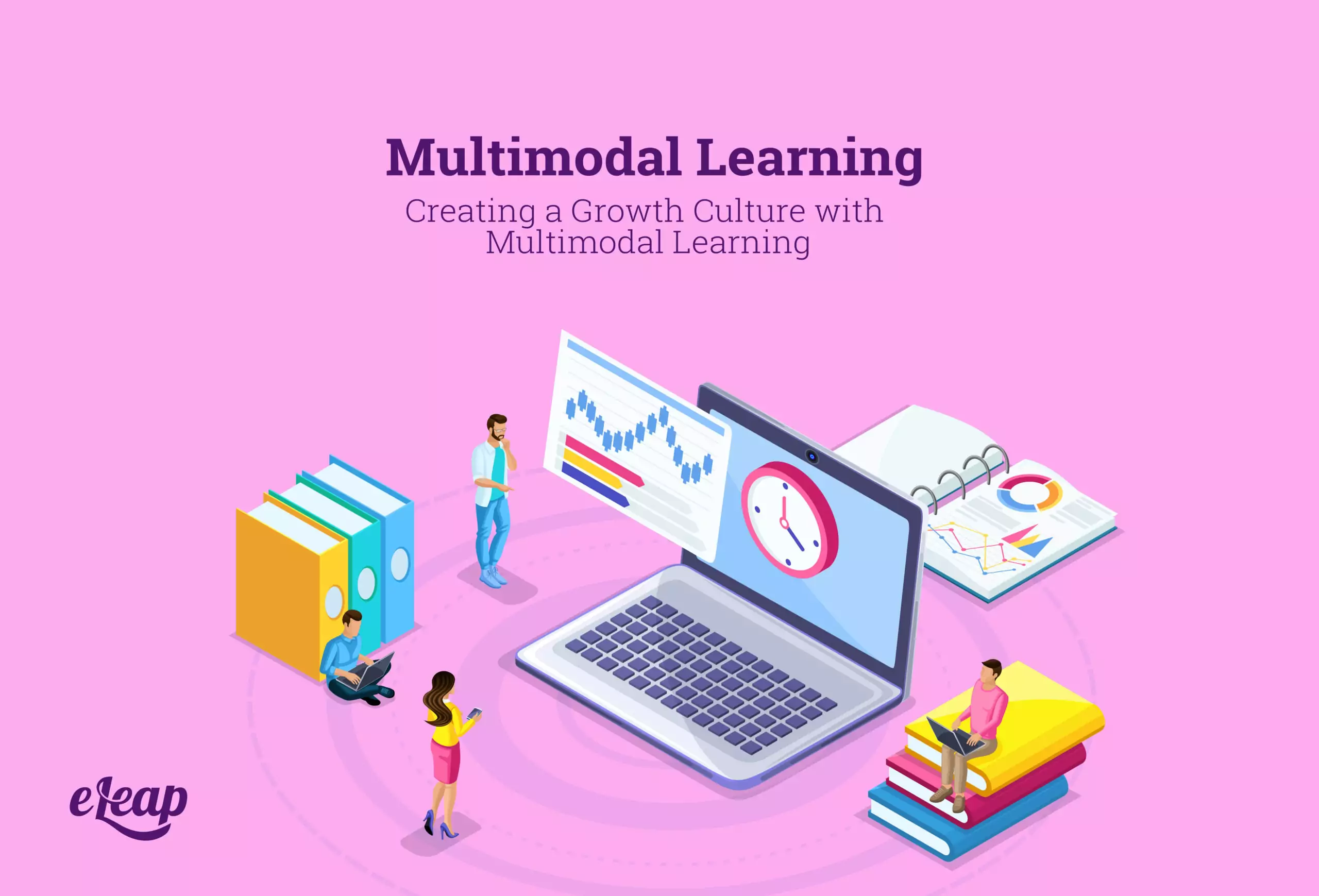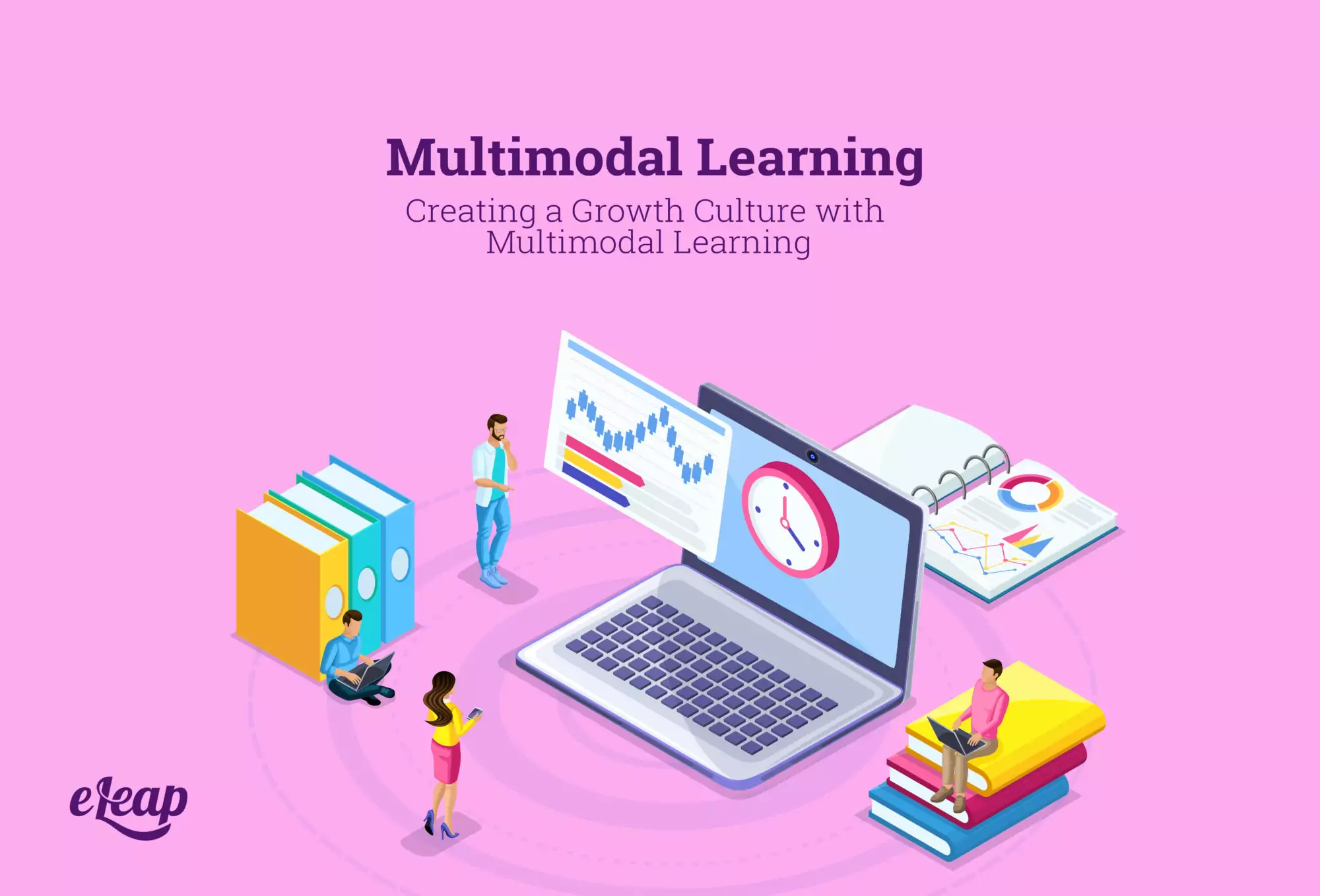Multimodal Learning
Creating a Growth Culture with Multimodal Learning

Curating training to the way that each member of your team learns can be a challenge. You want each of your employees to grow, which means offering training that fits their unique learning styles. One way to tackle this challenge is to lean on multimodal learning, a teaching method that utilizes all the senses.

What Is Multimodal Learning?
If you have ever been in a training session with a speaker flipping through slides and thought to yourself that you’d never remember any of this later, you would be a great candidate to try out multimodal learning. This concept comes from school classrooms but has been adapted to workplace training as well. To put it simply, multimodal learning means teaching an idea through the use of aids that engage all the senses.
This can mean using visual aids, such as slides; auditory aids, such as a lecture; kinetic aids, such as hands-on activity to demonstrate the skill being taught; and other methods to help with retention, such as re-writing the material in your own words.
The 4 Modes of Multimodal Learning
A mode is simply a way for information to be shared with the human brain. You can think of each mode as a television channel. Tune in to one channel for this type of information, or tune into another for different information. This is a helpful way to ensure that each person in a training session is given the opportunity to learn in the best way for them.
The modes are:
- Kinesthetic: Some people learn best by doing. Hands-on projects with lots of trial and error can be the best way to quickly teach someone a new skill.
- Illustrations: Visuals such as graphs or charts and pictographs showing how to accomplish an unfamiliar task can be beneficial for some.
- Reading and Writing: Writing information down in your own words can help the brain retain the core meaning of the training, which can lead to true understanding.
- Audio: Listening to someone explain a task in different ways and repeating it back or asking questions can be very helpful for those who aren’t fond of reading textbooks or workbooks.
Encouraging Kinesthetic Learners
Working with kinesthetic learners is one of the ways that multimodal learning sets itself apart from traditional training methods. These are the types of students who want to be an active part of the training experience. Things you can do to encourage these learners include:
- Have them conduct their own research into the topic.
- Offer hands-on demonstrations of new techniques.
- Try role-playing new sales or customer service tactics.
- Give sample projects to be completed during the training.
Aiding Visual Learners
If your trainee is a visual learner, it’s a great idea to include charts or graphs to explain your points. Infographics and cartoons that help teach the concept or skill are great as well. But don’t limit yourself to just the type of visual aid you include. Also consider things such as:
- Color-coding information so that it stands out to a visual learner.
- Using flags or highlighting to catch the viewer’s eye for important notes.
- Making use of white space on slides or handouts to keep the information visually appealing.
Incorporating Reading and Writing into Training
This is the type of training that many of us are most familiar with. Using textbooks, workbooks, and other printed materials can still be a great way to teach a new skill, especially one that requires many steps to be performed in a specific order. If your team will need to reference the material again in the future, printed material is a great idea. Here are some ways to include writing in your multimodal learning training:
- After the training, give a written exam with essay questions that encourage re-writing the material in the trainee’s own words.
- Use true and false or multiple-choice questions to get shorter pieces of information across.
- Try using eBooks or PDFs that can be annotated if printed materials don’t work in a virtual workspace.
Working with Audio
Auditory learning is another traditional method of teaching that is still a big part of multimodal learning. Sitting through a lecture may sound awful, but the right speaker can make a training session feel like fun rather than a chore. And remember, you don’t have to do a live speech. Consider presentations through media such as:
- Podcasts
- Webinars
- Audiobooks
- Group discussions
Growing with Multimodal Learning
The first thing you can do to see growth in your workplace with multimodal learning is simply adding to your existing training. If you already have a workbook and visual presentation training modules, consider adding an audiobook and group discussion element. You don’t have to re-design your training from the ground up when you can build on what you already have.
Consider how you can combine learning modes in one session to make training more efficient. Can you offer a group discussion that centers around taking turns with a hands-on project? Can you include more engaging visual elements on a handout with your webinar?
Reducing Overload in Multimodal Learning
It’s important to consider how overwhelming your training content might become as you add multimodal learning techniques. Focus on providing just enough stimulation to each of the senses that it helps, but not so much that it becomes too much to take in.
Be sure to limit outside distractions during training so that the sensory input you are providing is front and center. Consider switching activities frequently during training so that no one sense becomes too over-used. Take breaks often to allow the information to sink in and let the senses recover. Be sure to collect feedback on what parts of the multimodal learning techniques worked best for your team.
Everyone Has the Opportunity to Grow
With multimodal learning, your entire team of employees has the same opportunity to learn in the way that suits their brain best. With careful organization and willingness to adapt, this tool can revitalize your training programs.